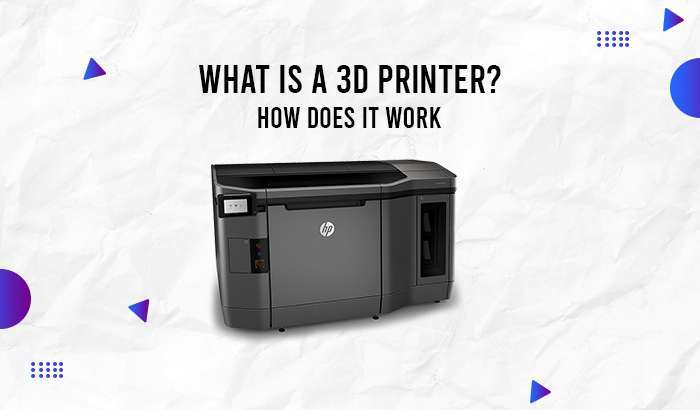With the immense evolution of emerging technologies, most printer devices take advantage of them to produce the best possible results. The 3D printer is one of them. This printer machine is used widely in today’s world and within a shorter time period, it has become an important asset of almost every workplace or workstation.
Now, we can see that 3D printers are building everything from homes to cars. Along with that, we also see that this peripheral device is viable to the personal protective equipment which is used by numerous healthcare workers all across the globe.
Do you have any problem installing a printer device? Don’t worry, stay connected with Printer Helpers and get complete support for any brand ‘Printer Installation’.
This article illustrates a complete overview of the 3D printer and its working process.
Let’s talk about 3D printers and their working process
What is 3D printing?
Typically, 3D printing is a process of constructing a three-dimensional model from a digital object or Computer-aided design format. Rapid prototyping technologies are used to create complex 3d printing objects. An element is made in an additive technique by putting down successive layers of material till the product is complete. All of these layers can be viewed as a cross-section of the item that has been lightly cut.
Subtractive manufacturing, which involves cutting or hollowing out a piece of metal or plastic with a milling machine, is the polar opposite of 3D printing.
When compared to conventional production methods, 3D printing allows you to create complicated objects with few resources.
This printing process is very demandable by numerous industries like dental, steel, and many others. Along with that, the 3D printing process uses emerging technologies named rapid prototyping that produce 100% quality results.
Why is 3D Printing important in the Future?
3D printers are tremendously versatile, not only in terms of the equipment they can print with but also in terms of what they can print. They're also extremely precise and quick, offering them a viable tool for the future of production.
Nowadays, many companies use this high-tech printing technique to produce marvelous results in the form of designs. As this printing process is less time-consuming that’s why best-rated companies use it for better convenience. They print models within few hours rather than investing months, money, and more importantly time on traditional printing.
Apart from this, 3d printers have numerable applications in all domains and they're not simply for prototypes anymore. Finished objects are being printed by a large number of 3D printers. Although, this revolutionary printing process is actually being used in the construction sector to print entire homes. 3D printers are being used in classrooms all across the world to bring fingertips learning into the classroom by manufacturing three-dimensional robotics bits.
What is the Working Process of 3D Printers?
A 3D printer works in two modules that are demonstrated below:
Module One. 3D Modelling Software
The foremost step of 3D printing is to set up the 3D models or modeling which is only done by the 3D modeling software. As per all precision, all of the objects are created or designed in this astonishing 3D software. We have seen that most designs involve traditional and complicated manufacturing processes that’s why this software came into existence and solve every query easily.
Image Source: https://www.researchgate.net/profile/Dave-Marmik/publication/321487724/figure/fig2/AS:567682740297729@1512357520384/Figure3-working-principle-of-3D-printer-8.png
Along with that, this software permit printer devices to easily customize their projects to the smallest requirements. The working capability of this software is considered as a complete game-changer for various industries where three-dimensional tasks approved. Thus, the major use of this software is in the dentistry department, where professional labs use 3d designs for teeth aligners that easily fit into the individuals.
Module Two. Slicing the Model
Once your object model is defined or created then your next step is to perform the ‘Slicing’ process. Because 3D printers, unlike individuals, are unable to grasp the importance of three dimensions, design engineers must split the model into layers in order for the printer to generate the desired result.
Slicing software captures scanning of each tier of a model and instructs the printer on how to duplicate that layer. 3D printers use slicers to tell them where to "load" a model. This filling inserts interior lattices and pillars to a 3D printed object, which assists in shape and support it. After the model has been sliced successfully, it is transferred to the 3D printer to begin the overall printing process.
Module Three. The Begining of the 3D Printing Process
Then, the last step you need to perform is the 3d printing mechanism. In the direct 3D printing method, the printer device starts working similarly to a standard inkjet printer, with a nozzle moving back and forth while depositing a wax or polycarbonate polymer layer by layer, waiting for each layer to dry before adding the next.
It works by stacking hundreds or even thousands of two-dimensional prints on top of each other to create a three-dimensional item. A printer utilizes a range of substances to duplicate an item to the best of its ability.
Applications of 3D Printers
There are dozens of applications of 3D printers that provide immense benefits to various industries.
- Dental Industry.
- Aerospace & Defence.
- Medicine.
- Personalized Products.
- Visualization.


Discussion